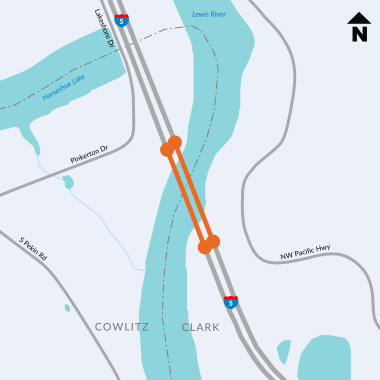Project overview
This project repaired the bridge deck, modified expansion joints and installed a polyester concrete overlay on both I-5 northbound and southbound bridges over the North Fork Lewis River. Structural steel repairs were made on the southbound bridge. Travelers enjoy a smoother and safer driving surface and experience fewer unexpected closures for emergency repairs.
Image shows location of critical bridge deck repair work happening along the I-5 North Fork Lewis River Bridge, at the Clark and Cowlitz county borders, just south of Woodland, WA.

